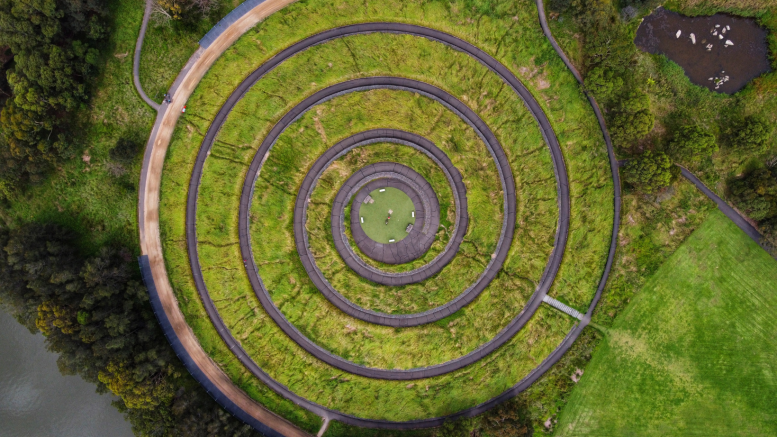What if the world’s most advanced circular economy
wasn’t invented in a lab…
but carried in the memory of the land?
What if the solutions to climate collapse, biodiversity loss, and ecological breakdown
have already existed for thousands of years —
practiced by Indigenous cultures who understand that everything moves in cycles?
We’re flipping the script on what counts as “innovation.”
Because Indigenous knowledge isn’t ancient history…
it’s future intelligence.
The Problem: A Linear Worldview Broke the Circle
Industrial society is built on a straight line:
Take → Use → Waste → Repeat.
This worldview:
- Extracts without restoring
- Consumes without gratitude
- Builds without listening
- Destroys without consequence
- Breaks relationships between humans and the living world
But Indigenous cultures embody a different operating system:
reciprocity, repair, renewal, rewilding, balance, and respect for all relations.
Circularity isn’t a trend —
it’s a worldview that never forgot we belong to the Earth.
The Flip — Cultural Circularity: Living in Right Relationship
Cultural circularity means designing life around:
- Natural cycles
- Ancestral knowledge
- Sacred materials
- Stewardship instead of ownership
- Community governance
- Long-term thinking
- Regeneration instead of extraction
In this worldview, land isn’t a commodity —
it’s a relative.
Water isn’t a resource —
it’s a teacher.
Materials aren’t disposable —
they’re sacred.
Let’s see what this looks like across cultures.
Real Examples — Indigenous Circularity in Action
Example 1: The Three Sisters Polyculture — Haudenosaunee (Iroquois)
Corn, beans, and squash planted together form a perfect ecological cycle:
- Corn provides structure
- Beans fix nitrogen
- Squash protects soil
Zero chemicals. Zero waste. Maximum reciprocity.
Cultural Fire Stewardship — California, Australia
Indigenous fire practitioners use low-intensity burns to:
- Prevent megafires
- Restore ecosystems
- Revitalize medicinal plants
- Support wildlife habitat
- Protect water cycles
Western fire suppression broke the system.
Indigenous fire restores it.
Māori Kaitiakitanga — Aotearoa (New Zealand)
Kaitiakitanga means “guardianship of the natural world.”
Practices include:
- Rotational harvesting
- Sacred river protection
- Fishing limits based on ecological signals
- Recognizing ecosystems as legal persons
The Whanganui River now has full legal rights.
Amazonian Food Forests — Kayapó, Asháninka, Shipibo-Conibo
Biodiverse agroforestry systems cultivated for thousands of years:
- Cassava
- Açaí
- Cacao
- Nuts
- Medicinal plants
- Hardwood trees
These aren’t “wild” forests —
they’re living expressions of Indigenous land design.
Alaska Native Salmon Cycles
Tribal stewardship protects salmon runs through:
- Seasonal closures
- Respectful harvesting
- Watershed protection
- Ceremony tied to ecological timing
This is circular governance rooted in relationship.
Sámi Reindeer Herding — Northern Europe
Sámi communities coordinate migration routes based on:
- Snow cycles
- Plant regeneration
- Predator relationships
- Cultural memory
A perfect example of interdependence as policy.
Pueblo Pottery & Sacred Materials — Southwest U.S.
Clay gathered with ceremony teaches:
- Only take what is needed
- Return materials to the Earth
- Repair over discard
- Create with intention
- Honor the source
Material culture is ecological culture.
Why Indigenous Circularity Matters
Climate Solutions Rooted in Relationship
Indigenous-managed lands protect 80% of the world’s remaining biodiversity.
Regenerative Land Stewardship
Traditional burning, seed saving, rainwater harvesting, and agroforestry regenerate ecosystems.
Cultural Healing & Community Power
Ancestral practices strengthen identity, belonging, and mental health.
⚖️ Environmental Justice
Indigenous governance defends land rights, watersheds, forests, and future generations.
♻️ Circular Material Cycles
Sacred materials ensure:
- Use with intention
- Repair before replacement
- Return to Earth after usefulness
A circularity deeper than technology —
rooted in worldview.
What Communities Can Do Now
1. Support Indigenous leadership in land and water governance.
Honor sovereignty. Follow Indigenous-led conservation.
2. Integrate Indigenous ecological knowledge in city planning.
Fire stewardship. Watershed design. Seasonal cycles.
3. Learn from circular cultural practices.
Seed exchanges, communal hunting rights, land-based ceremonies.
4. Build reciprocal relationships with local Indigenous communities.
Not extraction. Not tokenism. Relationship.
5. Protect sacred lands and knowledge systems.
Cultural survival = ecological survival.
6. Teach cultural circularity in schools.
Kids learn sustainability through-story, culture, and belonging.
The Big Shift
Indigenous cultures remind us that circularity isn’t a technology —
it’s a responsibility.
A way of living that asks:
What does the Earth need from us?
What do future generations deserve?
How do we return more than we take?
Cultural circularity flips the script from:
Extraction → Waste → Collapse
to
Reciprocity → Renewal → Regeneration
Indigenous stewardship isn’t the past.
It’s the path forward.
Because the future isn’t linear —
it’s circular.
And Indigenous cultures have carried the circle all along.
That’s how we flip the script.
